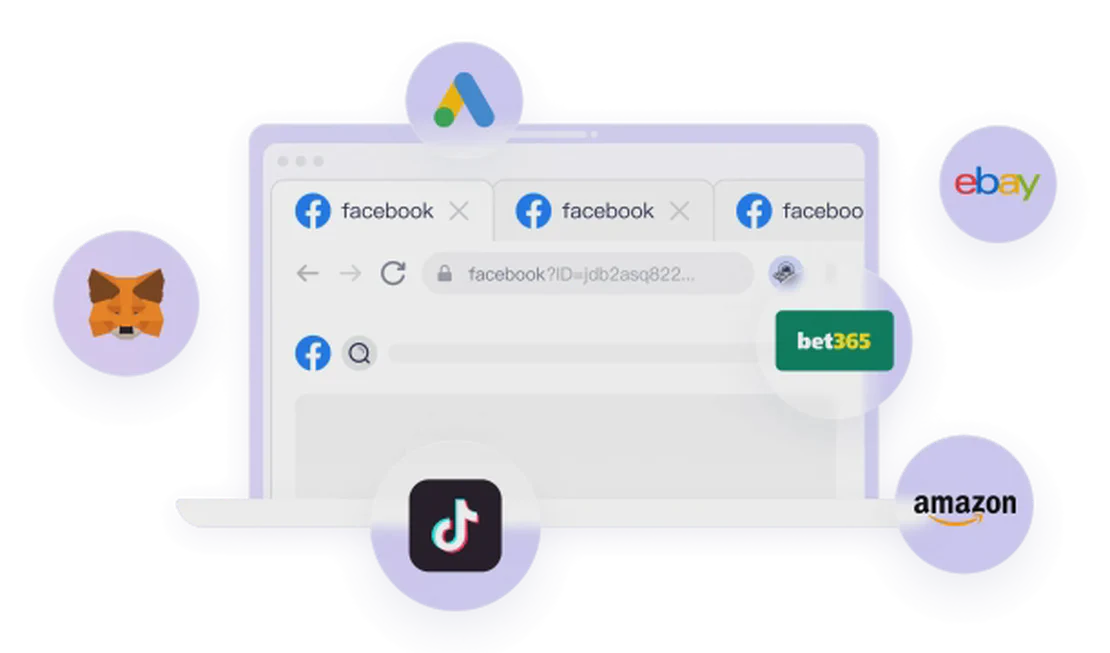What is Browser Fingerprinting?
When we visit websites, they collect specific information about us and the devices we use. This data is collectively known as browser fingerprinting. Through this data, websites can identify ordinary users with up to 99% accuracy. Yes, you heard that right, even “Incognito mode” cannot prevent this.
Browser fingerprinting can be used for:
- Determining behavioral characteristics of target audiences.
- Displaying targeted ads based on user requests.
- Detecting malicious activity.
- Tracking users with hidden IP addresses, etc.
In short, websites might know more about you than you think.
Why Do You Need an Anti-Detect Browser?
You might ask, don’t VPNs or proxies already hide IP addresses? That’s true, but they cannot hide your browser fingerprint. This is why we need an Anti-detect Browser.
An anti-detect browser is a browser that spoofs fingerprints and impersonates different users. It is functionally similar to a regular browser but offers additional services that allow you to run multiple independent accounts, each with a unique fingerprint, simultaneously on the same device.
Core Advantages of Anti-Detect Browsers
- Anonymity: Whether for business tasks or privacy-sensitive scenarios, anti-detect browsers provide the necessary confidentiality.
- Multi-Account Management: Create and manage multiple trusted accounts on the same website. This is crucial for affiliate marketing, social media management, e-commerce multi-store management, etc.
- Manipulating Reviews and Trustworthiness: Post content or reviews as different real users to increase credibility.
- Bypassing Restrictions and Anti-Fraud Systems: Use unique browser fingerprints to bypass website blocks on IP addresses or accounts. For example, if Facebook blocks one of your ad accounts, other accounts can continue to work normally because they have unique fingerprints.
- Extending Account Lifespan: By simulating real user behavior and unique fingerprints, the trust level of accounts is increased, thereby extending their lifespan.
- Automation: Most anti-detect browsers offer automation features that can perform routine tasks automatically, and even generate cookies.
- Team Collaboration: With the rise of affiliate marketing teams, most anti-detect browsers provide collaboration features, making it convenient for team members to manage accounts together.
Top Anti-Detect Browser Recommendations
There are many anti-detect browsers on the market, and choosing the right one requires testing and comparison. Here are five top anti-detect browsers popular in the affiliate marketing field:
1. FlashID
- Features: Combines anti-detect browser and cloud phone functionalities, supporting all usage scenarios.
- Functions:
- Simultaneously supports both anti-detect browser and Android cloud phone, covering mobile app operation scenarios.
- Simple and easy-to-use interface.
- Supports multiple workspaces, with comprehensive team collaboration features.
- Supports template creation for increased efficiency.
- Browser fingerprint information is authentic and reliable, offering excellent simulation.
- High security, protecting user data and operational privacy.
- Pricing: Affordable and offers high cost-performance.
2. AdsPower
- Features: Powerful browser suitable for affiliate marketing and other commercial uses, initially developed for e-commerce.
- Functions:
- Local API and versatile RPA robot automation (main feature, requires minimal technical skills to program robots for daily tasks).
- Multi-level distributed team collaboration.
- Positions itself as the most secure, providing instructions for setting up protection.
- Offers two types: Sun browser based on the Chromium engine and Flower browser based on the Firefox engine.
- Has an academy on the browser website providing tutorials and instructions.
- Pricing: Has a free version, but supports only two profiles.
3. Dolphin Anti
- Features: Customized for affiliate marketing on Facebook, Google, and TikTok.
- Functions:
- Provides hundreds of unique profiles (real fingerprints).
- Supports team collaboration.
- Directly update mobile proxy IP from the browser interface.
- Share bookmarks and profile extensions.
- Facebook automation and special TikTok services (coming soon).
- Offers statistics for all profiles, creation, copying, and management of advertising campaigns in one place.
- Flexible team management, easy creation and assignment of automation rules for accounts.
- Autopilot, automatic comment moderation.
- Pricing: Free plan includes 10 accounts. Paid service comes with a three-day trial.
4. Indigo Browser (by Indigo)
- Features: Primarily designed to solve affiliate marketing problems, with its own constantly updated fingerprint database.
- Functions:
- Boasts the highest testability.
- Convenient team collaboration with access control and status tracking.
- Mobile fingerprinting (IE Advanced browser emulator, Android-based mobile device software).
- Ready to use out of the box, no setup required.
- Offers two types: Fox based on Google Chrome style and Style based on Firefox.
- Pricing: No free version, but offers a seven-day trial.
5. GoLogin
- Features: Positioned as a universal tool for the internet.
- Functions:
- Its most prominent feature is the ability to run profiles from the cloud.
- Supports Android app web version, free proxies (for specific GEOs).
- Integrates with Tor browser.
- Each profile is hosted separately in the cloud to protect data and privacy.
- Over 50 fingerprint customization features.
- Team collaboration.
- Pricing: Offers various complex solutions. Annual payment gets a 50% discount. Provides a free version for three profiles and a seven-day trial.
Conclusion
Choosing an anti-detect browser involves many variables, and finding the right tool for you requires personal testing.
📌 Related Tools/Links Summary:
- ✅ FlashID: https://www.flashid.net/
- ✅ AdsPower: https://www.adspower.com/
- ✅ Dolphin Anti: https://dolphin-anty.net/
- ✅ Indigo Browser: https://indigobrowser.com/
- ✅ GoLogin: https://gologin.com/
You May Also Like
